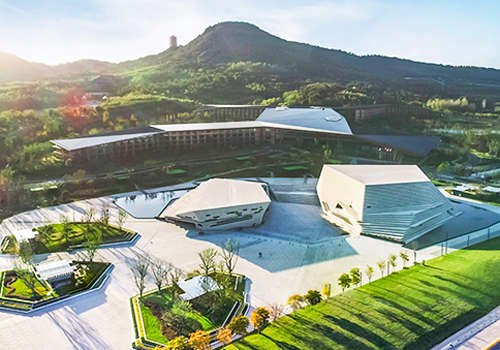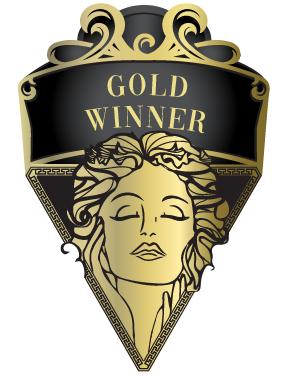
Interview
Yu Gao
1 Please give us a brief bio of yourself and your design background.
I am Yu Gao, graduated from the Department of Architecture at Southeast University. With nearly 30 years of career experience, I have presided over and completed nearly 5 million square meters of construction projects (covering various types of single buildings, urban planning, and landscape design). I have managed the creation of 3 large-scale design agencies.
2 What made you become/why did you choose to become a designer/artist?
The first step that took me into the field of design was when I was doing it for my livelihood. However, throughout the process of learning and practicing, I found that I have a certain degree of creativity and a high degree of organization and coordination ability, which provided a sufficient foundation and guarantee for me to complete the corresponding tasks entrusted to me. With the completion of various design projects, I gained recognition from project owners and the public. Hence, I was able to accumulate enough self-confidence and provide effective management for the implementation of the next project.
3 Tell us more about your business/company, job profile, and what you do.
I have previously managed over JIANGSU province architectural garden design institute and the NANJING branch of the GUANGZHOU southern architectural design and research institute. Currently, I am the President of the Design Institute of NANJING HONGYA Construction Group co, Ltd. Our business covers architectural design, landscape design, urban planning, interior design, and other aspects of design. From rural environmental improvement to the single design of street police stations to the largest supermarket store in East China to the 600th Hilton Hotel in Hilton Greater China, we can provide effective services to meet the various needs of owners.
4 What does “design” mean to you?
To me, design has 2 meanings; firstly it is a means of making a living, and secondly, it is a necessary part of life.
5 To you, what makes a “good” design?
Good design is to understand the effective needs of the owners, the use of concrete conditions, through effective design organization to achieve the actual needs of the owners, and can create a certain social value. At the same time, gives users a certain sense of mind.
6 Describe your design style and its main characteristics.
For the accurate response to demand, the effective satisfaction of functions, the organic use of materials, and the precise control of cost.
7 Tell us about your design process.
After any project is entrusted to be implemented, we must first understand the owner's intentions overall, the actual situation of the physical environment, natural environment, and humanistic environment involved in the project, and the constraints related to the construction of the project, then arrange and implement the corresponding drawing design, integrate the corresponding psychological factors into the design again, and finally implement the corresponding design results.
8 Do you think your country and its cultural heritage has an impact on your design process?
The Chinese nation has a long history and culture of architectural construction. It is a great honor to learn, grow, and practice in this atmosphere. The ancestors of China and the builders of the past dynasties have left brilliant examples of architecture, which is our inexhaustible source of design. Although the times are developing, the materials are progressing, and the ideas are updated, the origin of the design has never changed.
9 Congratulations! As the winner of the 2024 MUSE Design Awards, what does it mean to you and your company and team to receive this award distinction?
It is a great honor for our team and individuals to win the world-class Muse Award, and it also provides an effective motivation for our subsequent design projects.
10 Can you explain a bit about the winning work you entered into the 2024 MUSE Design Awards, and why you chose to enter this project?
The commercial comprehensive supporting project at the eastern foot of Niushou Mountain is composed of the 600th Hilton Hotel in Hilton Greater China and two commercial units, with a total construction area of 166,000 square meters. We presided over the design of the architecture, interior design, and outdoor landscape space of the whole project. This project was acquired out of the owner's unlimited trust in us.
11 What was the biggest challenge with this project?
The project is located at the eastern foot of Niushou Mountain Scenic Area, which is an important exhibition area at the entrance of the scenic area. Therefore, in coordination with the development of the scenic area and the overall planning of the surrounding area, how to organize the traffic, parking, and people flow at the east entrance and the surrounding area is a difficult point. Niushou Mountain is a place of worship for the Buddha's parietal bone relic of Buddhism, it is also difficult to build the project into a cultural and creative format with Niushou Mountain cultural characteristics. In addition, how to protect and sort out the complex mountain terrain in the site, how to connect and transition the land use function with the surrounding protected areas, and how to create a public environment that can meet the needs of buildings with different functions under the premise of rated funds are even more difficult for designers to think, communicate, coordinate and balance.
12 How has winning an Award developed your practice/career?
This award is a commendation and recognition of individual and team design ability, and also lays an effective foundation for the consolidation of self-confidence in subsequent design and the ability to solve complex design projects.
13 What are your top three (3) favorite things about our industry?
There are three things that people are more interested in the design industry, firstly is the demand and embodiment of different functions, the second is satisfaction of different customer needs, and lastly is the application of continuous development of material technology.
14 What makes your country specifically, unique in the design industry?
China has a long history and culture. It has built large-scale cities, huge single landmark buildings, magnificent interior spaces and grand landscape buildings. These treasures are inexhaustible design sources for designers. With China's reform and opening up in the past 40 years, it has been accompanied by a huge amount of construction tasks, which has provided designers with a good environment and opportunities.
15 Where do you see the evolution of design industry going over the next 5-10 years?
With the progress of science and technology, with the continuous development and implementation of artificial intelligence, design will follow the footsteps of science and technology to meet all kinds of needs, and leading developments.
16 If you were a student entering this industry or an aspiring MUSE Design Awards submitter, what advice would you give them?
Learn the origin of design, starting from the heart, do the simplest design, do not be superstitious, do not be greedy, and remain down-to-earth step by step while designing.
17 What resources would you recommend to someone who wants to improve their skills in the design industry?
Learn and understand all the landmarks and iconic designs as comprehensively and effectively as possible.
18 Who has inspired you in your life and why?
The general layout of the primary school is my earliest enlightenment to architecture, planning and landscape design. It allows me to truly experience the different experiences and changes of functions, streamlines and moods in different spaces.
19 What is your key to success? Any parting words of wisdom?
The way to success is to do a good job by sticking to it conscientiously and implementing it steadily.

